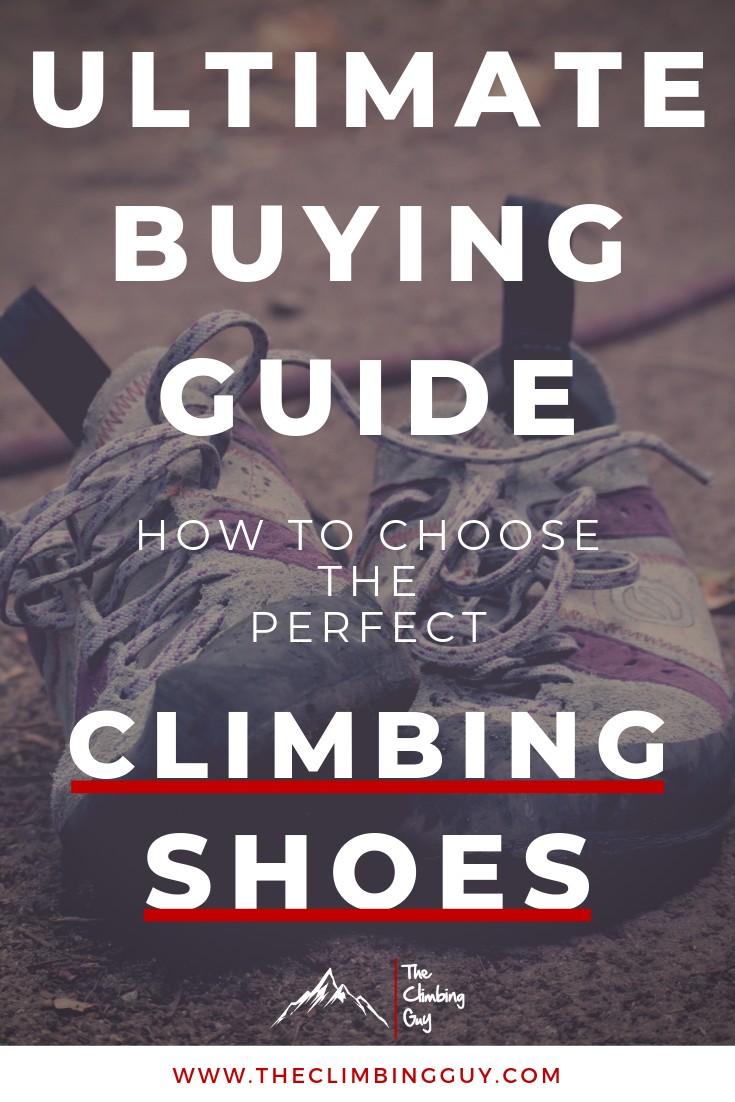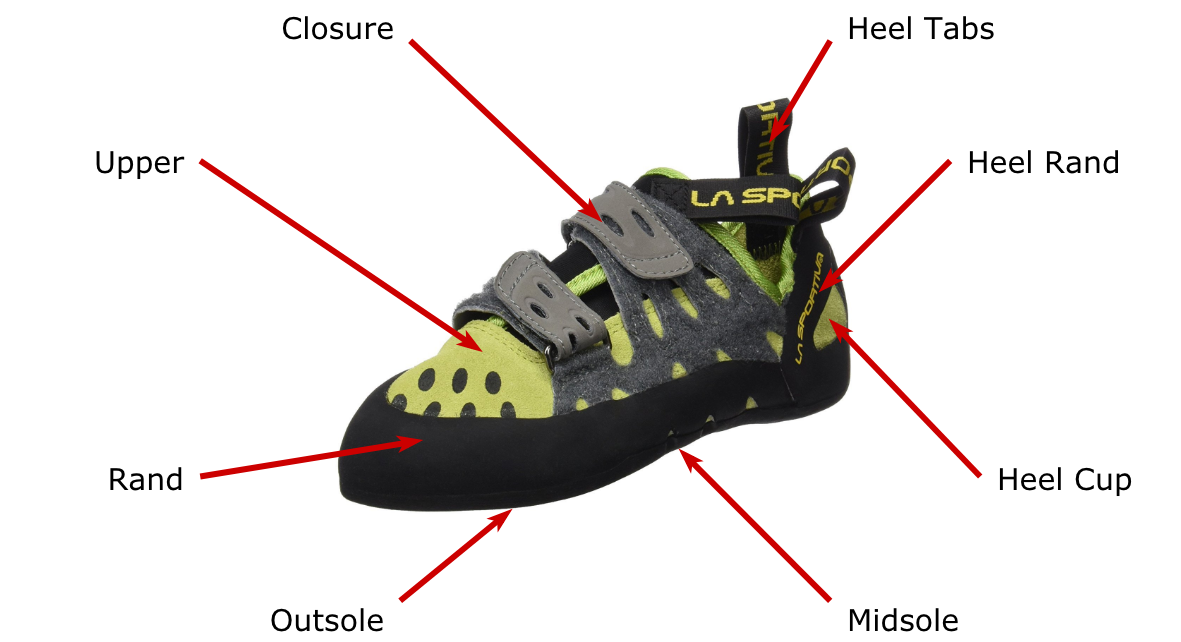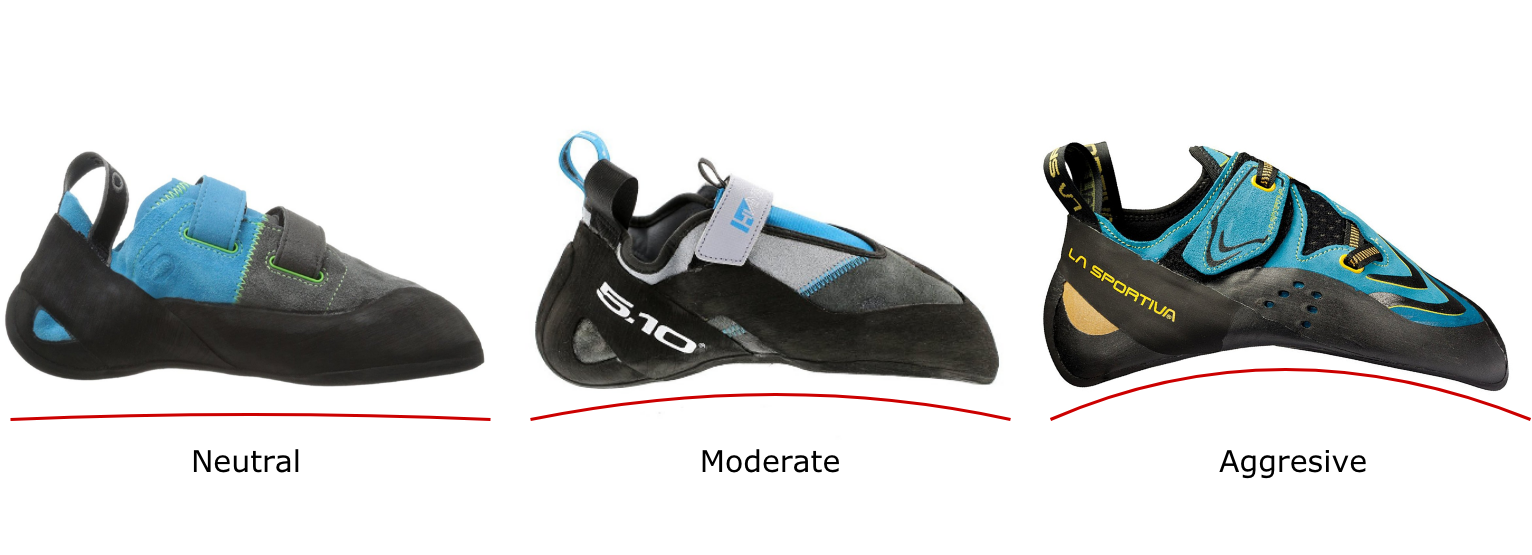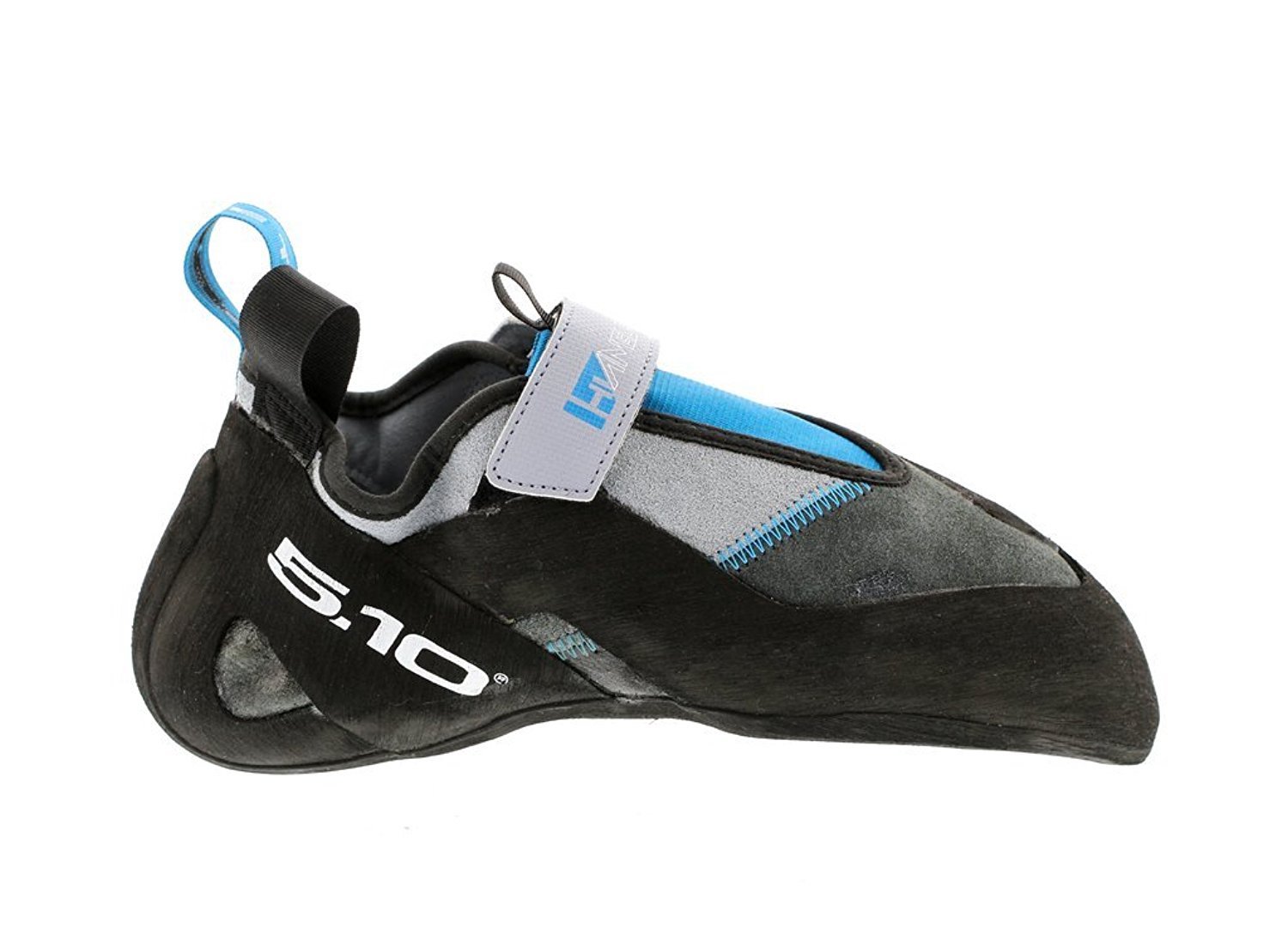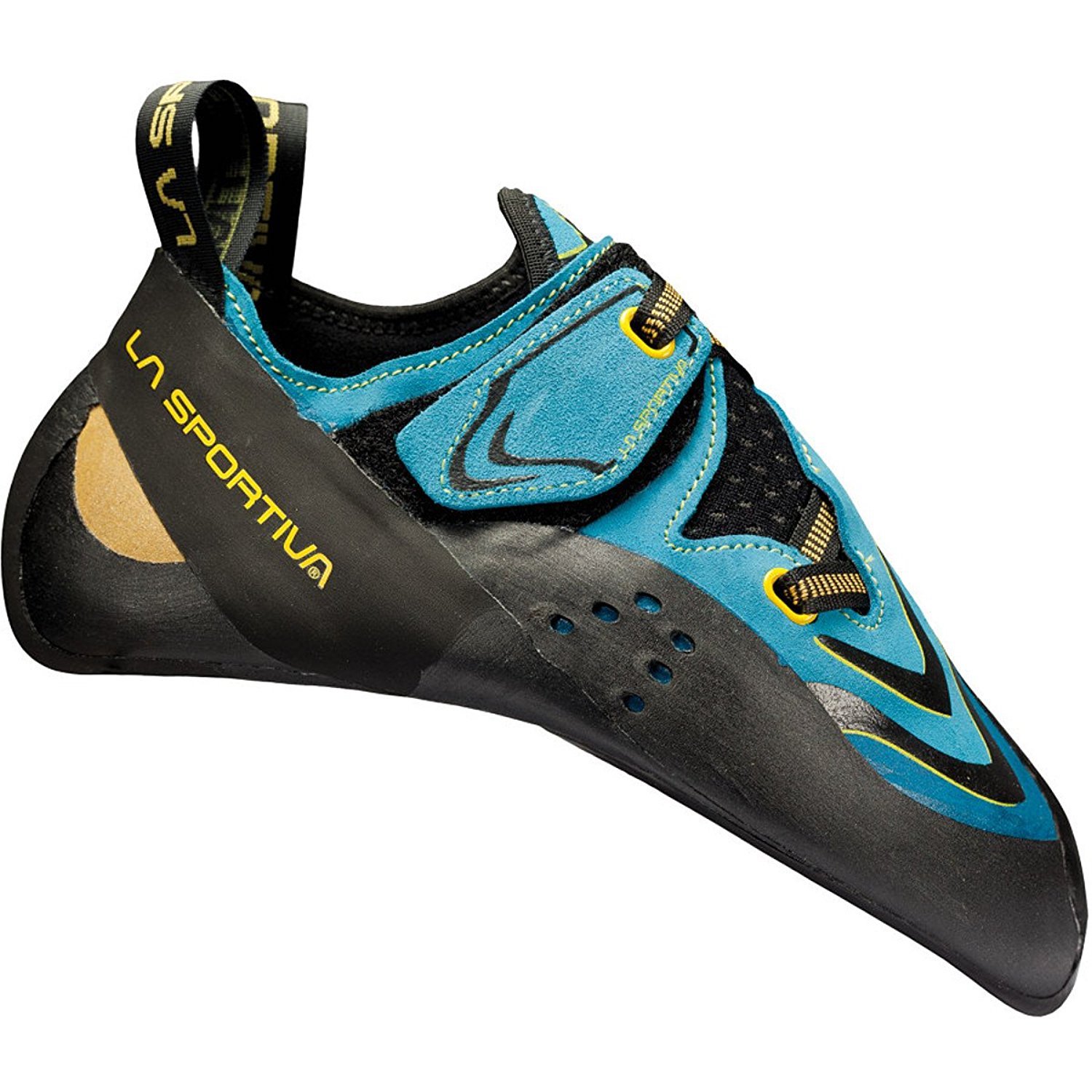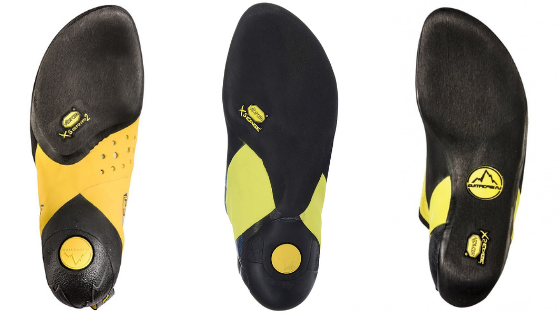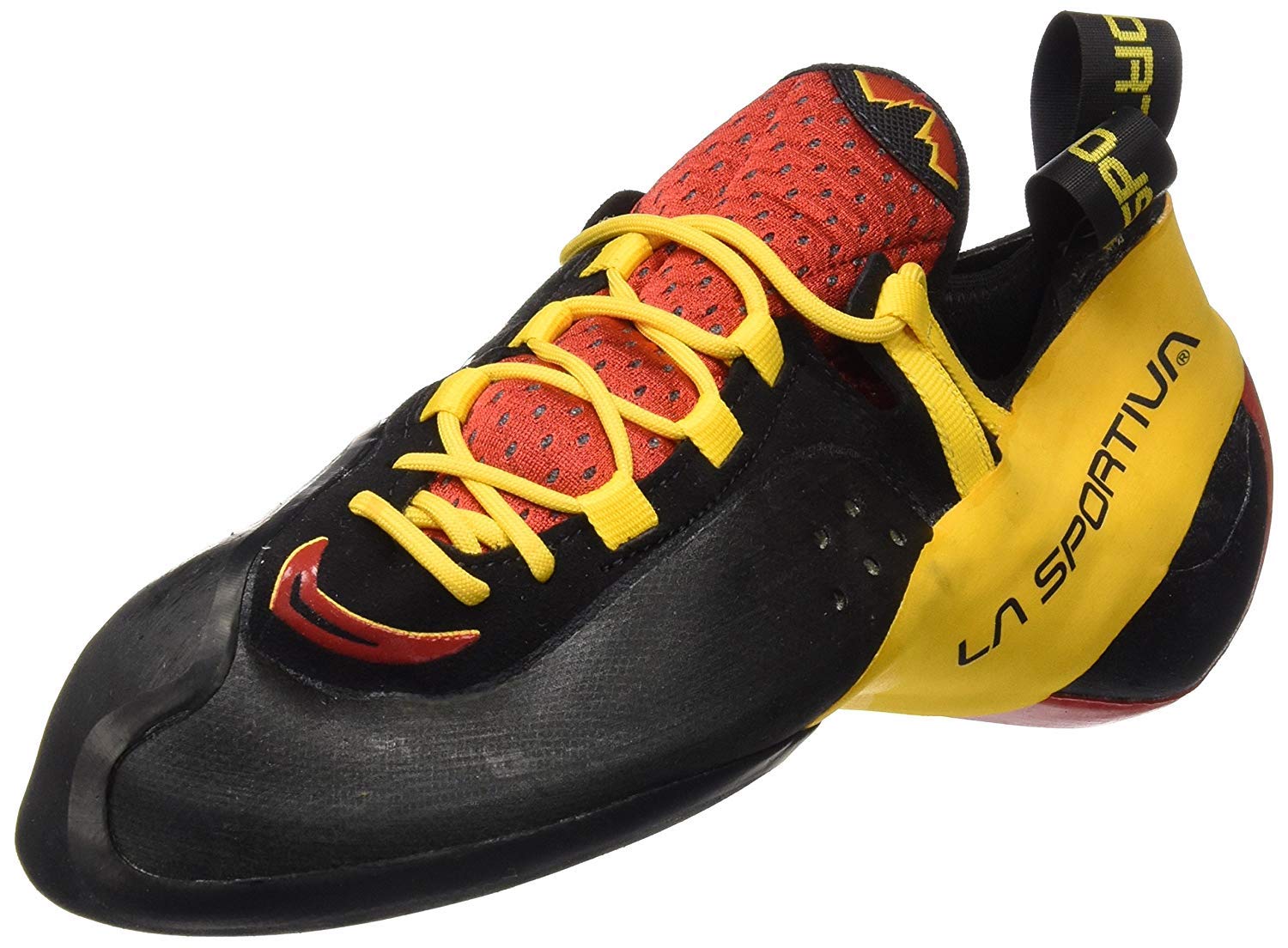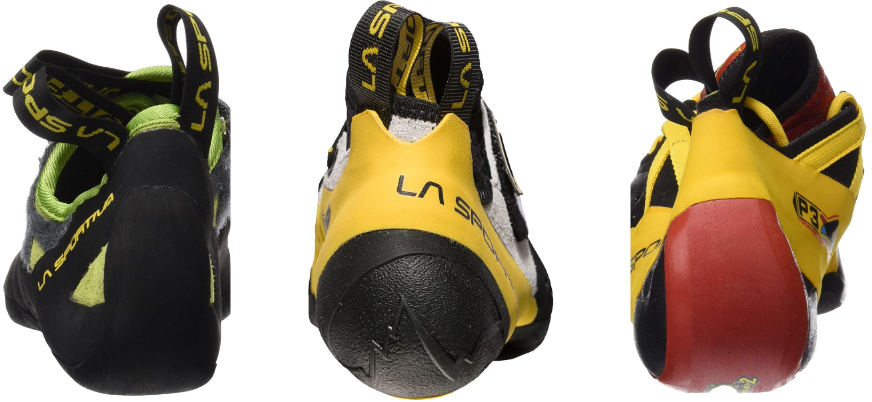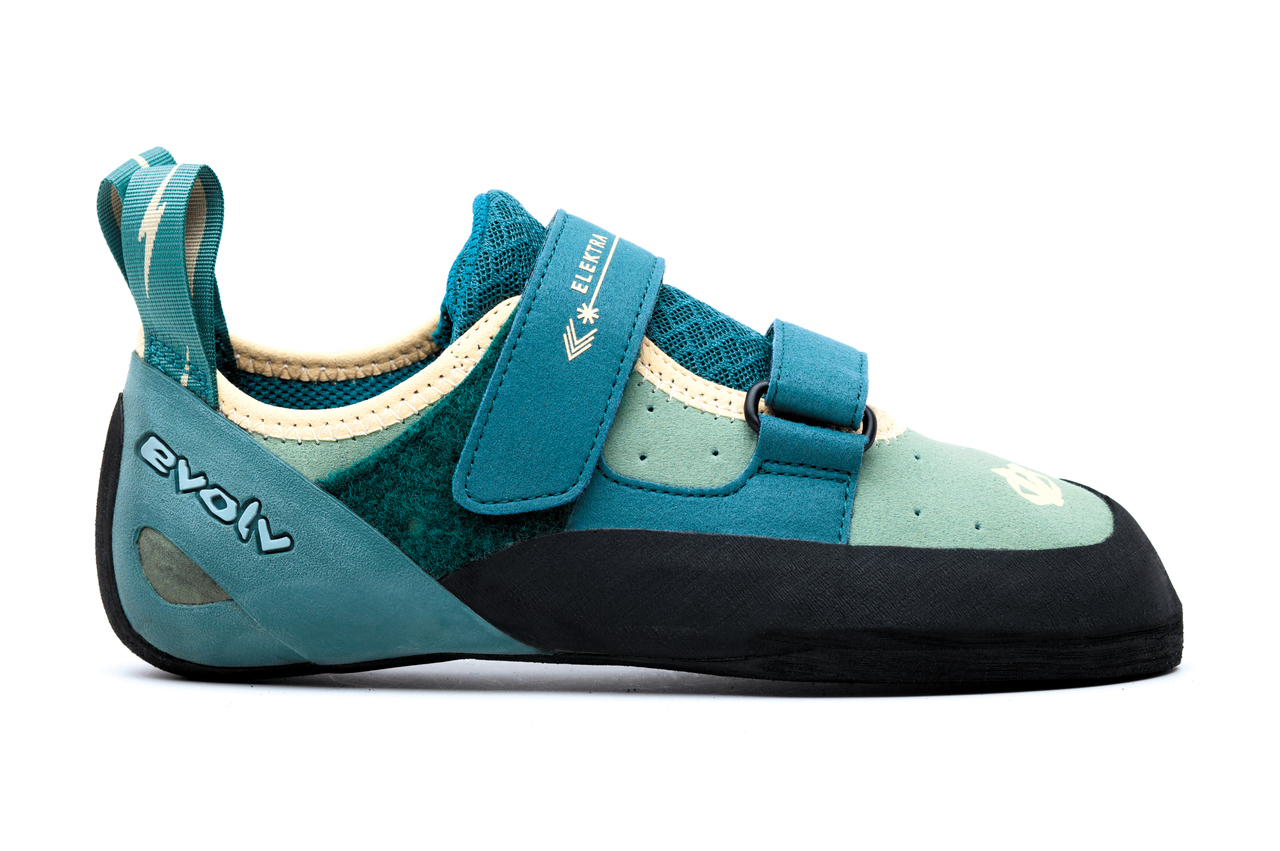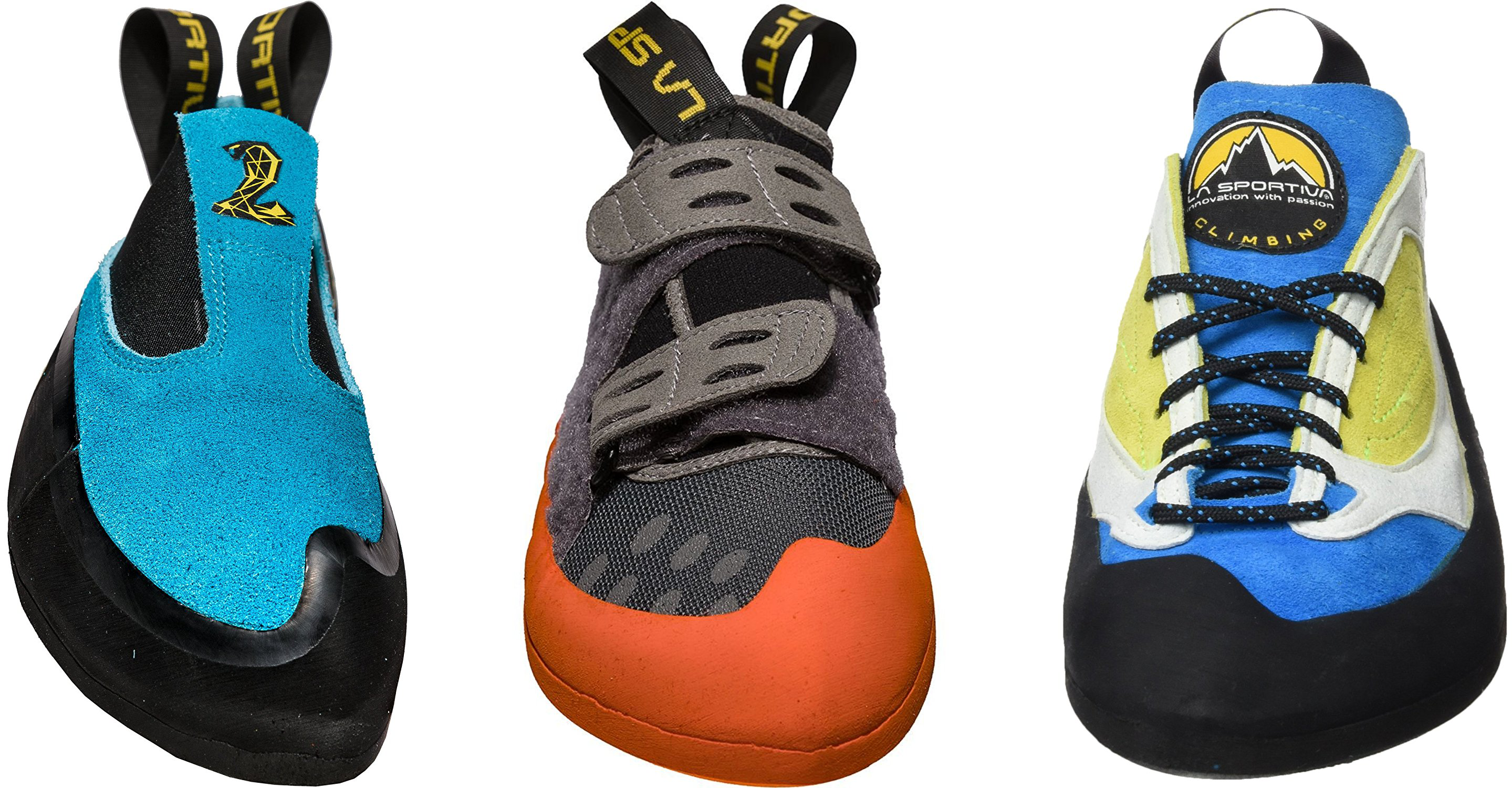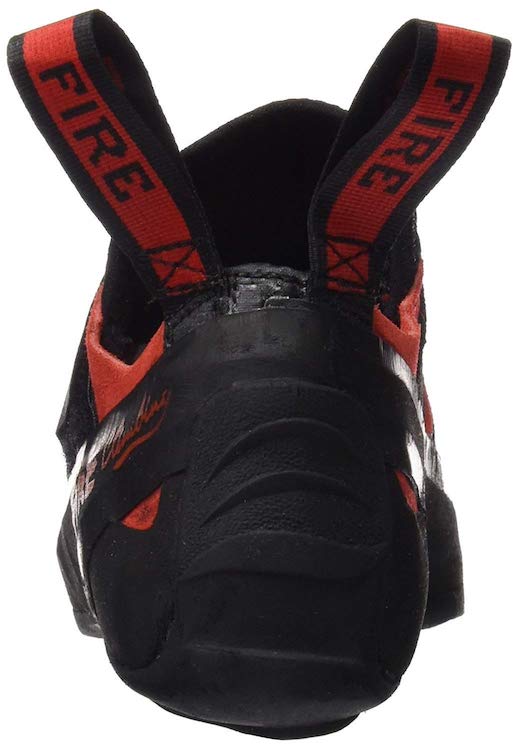Buying a new pair of rock climbing shoes can be an exciting, but daunting task, especially if it’s your first time.
We know, we’ve been there!
A quick google search will show you that there is a whole world of information available online which can be both overwhelming and inaccurate.
Plus, everyone you’ve ever climbed with will want to offer you some advice based on their personal experience.
So, if you want to know how to choose climbing shoes, we're here to help, but please take care if you buy your first pair on the internet. Make sure you get a range of sizes and wear them for a while before committing to them. When you're just starting out, a good neutral to the moderate, middle of the range shoe is what you should be looking for.
While all of this insight is appreciated and valued, what a new climber really needs is a thorough buying guide to help select their first or next pair.
If that description fits you, then you’re in luck because that’s what we’re here for.
Rock Climbing Shoe Features
Let’s start with the key components of modern climbing shoes and then dig into how each feature can affect the way it performs.
Main features of a modern climbing shoe
Last Shapes
The last is actually a plastic mould used by the manufacturer to create the overall shape.
The last is the thing that not only sets the size and shape but also the asymmetry of the shoe. It forms the foundation upon which all of the other components are mounted.
There are a couple of types of last that you may hear about, slip and board-lasted.
Slip Lasts
The most common today is the slip-lasted.
This construction forms a continuous sock of fabric as the base for the shoe.
The soles, rands and other components are then added to the outside to create the finished article.
Slip lasted shoes are generally more flexible and offer higher degrees of precision and feel than their board-lasted counterparts.
Board Lasts
Board lasted shoes have actually been around for longer than their slip-lasted counterparts, but still, have their applications.
Board lasted shoes have a stiff insole, which is attached to the upper, which is not a continuous sock.
The rest is then built around this stiff insole.
This makes it much stiffer but does reduce the sensitivity and feel of it.
That said, thanks to the more rigid footbed, board-lasted shoes can be great for routes that require lots of edging or longer alpine or big wall style routes, where the extra support can be beneficial.
Gender Differences
The last can differ a reasonable amount between men and women’s footwear.
Often this is across the width of the foot and the heel, as well as the overall volume of the last, the height of the foot.
There is absolutely nothing stopping men wearing women’s shoes and women wearing men’s. If you are a woman, with particularly high volume fit, you may find that men’s simply fit better and vice versa.
Sole Asymmetry
Straigh, low and high asymmetry
The asymmetry of a shoe refers to how much it curves towards the big toe.
You may see them being sold as being straight or asymmetrical or high or low asymmetry, either way, both are referring to the same thing.
The reason manufacturers make asymmetric shoes is to drive more force through the big toe.
This allows the wearer to make tiny foot placements stick, as the amount of pressure that can be applied is magnified, by driving it through such a small area.
This does come at a cost however and that cost is the comfort.
Asymmetrical shoes are almost always combined with a highly tensioned, aggressively downturned design meaning that they can be seriously uncomfortable if worn for any length of time.
Fantastic for bouldering and high-level sport climbing, but best left at home for long alpine routes and trad routes.
Beginners should be straight. When you’re just starting out, you won’t have the technique, nor the toe strength to make use of the asymmetry and the discomfort is likely to put you off climbing. So stick to the straight designs.
Tip 1
Start out with a straight or low asymmetry shoe and focus on perfecting your movement skills
Profile
Climbing shoe profiles, neutral, moderate and aggressive
Modern climbing shoes are generally classified into three categories: neutral, moderate, and aggressive. These categories refer to the curvature of the footbed, which can have a drastic effect on your climbing precision and your all-day comfort.
Neutral
Neutral shoes tend to be the most comfortable because they let your toes lie flat without being scrunched or pointed.
These are excellent for newer climbers because they allow you to get a good, solid fit without any unnecessary discomfort. They also don’t place quite as much strain on your toes, which is important for beginners.
Five Ten Rogue VCS mens neutral climbing shoe
That being said, they’re also great for more experienced climbers. Particularly for those climbers who enjoy inching their way up cracks, a neutral shoe’s flat profile makes it great for foot jams and smearing.
Tip 2
Neutral shoes are the best place to start for beginners as you're likely to get none of the benefits from a more aggressive shoe, but still, suffer the discomfort
Moderate
Moderate shoes combine the best of neutral and aggressive into a middle-of-the spectrum hybrid. Instead of being flat and cosy like a neutral or snug and downturned like an aggressive shoe, moderates have just a slight amount of camber.
Five Ten Hiangle mens moderate climbing shoe
This slight downturn makes moderate shoes great for daily technical climbing on slabs, cracks, long multi-pitch and mildly overhung sport routes.
On the spectrum of comfort and rubber stickiness, moderate shoes fall right between their neutral and aggressive counterparts, as you might expect.
They are great all-purpose boots for your daily climbing needs. They’re excellent for climbers looking for one shoe that can perform decently in a variety of settings.
If you’re on a budget or simply don’t want to own 5 different pairs, a moderate pair might be a safe bet.
Aggressive
Aggressive climbing shoes exist on the opposite end of the spectrum of their neutral counterparts. Instead of being nice and comfortable, aggressive shoes are designed with a big downturned shape (called camber) which pulls the toes down and places lots of tension on the heel.
La Sportiva Futura mens aggressive climbing shoe
This downturned shape puts the foot in a strong, powerful position for tackling difficult overhangs and steep sport routes. Most of these focus power on the big toe to help climbers make precise foot placements.
They also typically have a more heavily developed heel area, that allows heels hooks to be deployed more effectively.
While the downturned shape is great for power and performance, as you might imagine, it’s not terribly comfortable for all-day wear.
Thus, they are best for single-pitch routes at the crag or the gym rather than on multi-pitch climbs.
For a broader picture on the breadth of profiles and asymmetry, Scarpa has a great visualisation in their how to choose climbing shoes article, covering their entire range and how the shape changes for different applications.
Outsole Sole
All climbing shoes use some sort of rubber in the outsole, which allows you to get maximum purchase on the rock.
Since the rubber is the part of the shoe that touches the rock, you can imagine that it’s quite an important part of your climbing shoe.
Rubber
Many climbing shoes use a variety of different Vibram rubbers, which are known for their durability and precision. Two of Vibram’s most successful rubbers, XS Edge and XS Grip 2, are used by almost all the main shoe manufacturers.
Other companies use their own proprietary rubber, which reduces costs and saves you money in the long-run.
Five Ten is one shoe company that makes its own climbing shoes rubber, which is known to be some of the best in the world. The Five Ten Stealth rubber, in particular, provides some of the best friction around.
Their Mi6 is softer than the classic C4, but the extra stickiness tends to wear out quickly, so you’ll need to re-sole your shoes more frequently. It will also perform less well on small edges, where the C4’s stiffer compound is likely to perform better.
Tip 3
Take a photo of the sizing label and the rubber logo before they wear off, you can then remember what you're using when comparing with other shoes
Sole Thickness
Sole thickness can have a huge impact on the sensitivity of the climbing shoe.
As a beginner, you want to avoid very thin soles, you want something nice a durable for your first pair, to maximise their lifespan.
As your climbing progresses, you’ll find yourself wanting to be able to feel more of the rock beneath your feet. Climbing gritstone or granite, and trying to perfectly position your foot on a tiny pebble is going to be made much harder with thicker, less sensitive soles.
Soles generally range somewhere in the following thicknesses:
- 3 - 3.5 mm - thin soles offering the maximum in feel, but will also wear out most quickly as will your toes
- 3.5 - 4.5 mm - average thickness soles, great for beginners or combination shoes that need to perform across a range of ground
- 4.5 - 5 mm - think soled workhorses, generally offering a stiffer platform and geared at long multi-pitch routes where sensitivity is less important
Midsole
Whilst the midsole isn’t as important from a friction point of view, it plays a key role in the stiffness of the shoe.
You generally have three choices here, a full sole, a partial split and a full split.
Split sole, partial sole and full sole cimbing shoes (left to right)
Full Sole
This generally offers a stiffer platform and provides the most support to the wearer. This is great for longer, multi-pitch days or on routes where edging performance is important.
The stiffer sole can be really beneficial when you are spending a lot of time putting weight on your feet, as the shoe supports the foot, saving your toes and calves from fatiguing.
The downside to a stiff sole is that they are less able to bend to the shape of the rock, so their smearing performance is not as good as a softer shoe.
They’re also not as able to flex and bend when climbing on steeper ground and trying to hook toes onto holds.
Tip 4
A medium flex, full sole midsole, is a good option for e beginner, as this will offer good support, whilst still being able to flex when needed.
Partial Split Sole
This is the middle ground between a full and a split and generally offers characteristics that sit between the two.
You may sometimes find partial splits on all-rounder shoes.
They can perform well across a range of disciplines from bouldering to crack climbing, where the foot needs to twist to perform foot jams.
Split Sole
This will give the maximum flexibility to the shoe and is found on many bouldering specific shoes.
This allows the sole to bend a flex into any shape required, but offers almost no support to the foot, meaning you have to do all of the work.
That’s fine for short, sharp bursts on your latest boulder project, but would quickly become tiring on longer routes.
Rand
The rand wraps around the outside of the climbing shoes and helps to give the upper part of its structure.
It also provides yet more rubber that can be deployed when trying to make a toe hook. Some shoes add additional rubber here, to further the contact surface when toe hooking.
La Sportiva's Genius showing a large rand around the front (black) and a thick heel rand at the back (yellow)
More aggressive shoes often include a heel rand also, this is the strip that wraps around the back of the heel and joins underneath the midsole.
When you’re putting on a shoe like this you’ll notice that the shape deforms as you slip your foot in. Pulling the tabs at the back will stretch the shoes to allow the heel to slip into position, after which the shoe contracts back around the foot.
It’s this pre-tensioning of the shoe that pushes the foot towards the toe box, making for that snug feeling around the toes.
Tip 5
Don't get a highly tensioned shoe first time around, this design is really aimed at intermediate or advanced climbers
The top of the shoe should now wrap around the foot, as it returns to its proper shape.
You may see brands talk about the amount of pre-tensioning in a particular shoe. Only intermediate to advanced climbers need to start thinking about getting more highly tensioned shoes.
Heel Cup
Unsurprisingly this is found at the back of the shoe and forms a cup around the heel.
Often, beginners shoes and those less focused on highly technical climbing will have a simple strip of rubber that wraps from underneath the shoe, up the heel.
Comparing heel cup styles, basic to more highly developed (left to right)
As the shoes get more technical, the heel cup can become a real point of differentiation, offering different designs and rubber compounds, all aimed at improving the performance of the shoe during heel hooks.
The shape of the heel is also worth taking note of, I’ve certainly tried shoes, that simply do not fit the shape of my feet.
Poor fitting here can be a source of significant pain or just crappy performance.
Upper
The uppers are more than just a stylistic addition. They have a significant impact on the feel and performance of the shoe, as well as how it wears over time.
There are three broad categories to be aware of there, leather or suede, lined leather or suede and synthetic.
The two characteristics to really watch here are stretch and breathability.
Leather or suede
Leather or suede can make for some of the most comfortable shoes you can buy, but you have to go on a bit of a journey first to get there.
The reason, stretch.
Leather or suede climbing shoes will stretch, anything up to one full size. This can mean that when you first buy them, they feel tight…really tight!
The breaking period can often be a bit painful and is definitely best done over a handful of climbing sessions, rather than during your first multi-pitch.
I remember being absolutely savaged during a day out in North Wales by a new pair of Mad Rock laces-ups a few years ago, not something I’d want to repeat.
The benefit, however, is that once they are broken in, you will have a pair of custom moulded climbing shoes. Adapted and shaped to the specific peculiarities of your feet and as a result, can offer great comfort and feel.
This adaptability of this type can also be something of a weakness, as the stretching will continue. This is particularly impactful in more aggressive shoes, as they can lose their shape over time.
This is where lining can help.
Before we get to that, it’s also worth mentioning that leather shoe breath significantly better than synthetic ones. So if you’re prone to sweaty/smelly feet, this might be a good option.
Thanks to the breathability, they will also help to keep your feet cooler, which can be very helpful in hotter climes.
If you do suffer from smelly climbing shoes, you should check out our article on how to how to stop climbing shoes smelling.
Lined Shoes
By combining leather or suede which stretch and a synthetic lining, which doesn’t, it’s possible to create a shoe that offers some of the flexibility of the full leather, whilst avoiding the excessive stretch.
The lining may be around the full foot or may be placed strategically in different parts of the shoe. The aim is to control the stretch in certain areas, whilst allowing it in others.
Thanks to the lining, such shoes generally only stretch around a half size, though this can vary, so check the manufacturer’s guidance.
You will also still have to break them in, as with leather.
It’s very common to have the toe area lined as this area takes such a beating, but this can affect sensitivity. This is less of an issue for beginners, but intermediate climbers may start to notice the reduced sensitivity in lined shoes.
Synthetic
Evolv's Elektra with their Agion® Antimicrobial liner
Finally, synthetic shoes are made of totally manmade materials.
They offer virtually no stretch, so don’t need to be sized down, but they do sometimes need a little breaking in. This is just to soften the materials but generally doesn’t take long to do.
As we’ve mentioned, they also breathe the least, so can get hot and smelly. Although some manufacturers, like Evolv, are now adding anti-microbial treatments to the materials to combat the stink.
They’ll also feel a little less glove like, as they don’t mould to your feet in the same way as natural uppers.
On the plus side, shoes made of synthetic materials tend to be vegetarian and vegan-friendly.
A final note on synthetics, Black Diamond have recently started using an Engineered Knit. This type of construction is synthetic and can vary in thickness across the shoe, allowing for variable stretch characteristics in different parts of the shoe.
I’ve not tried any, but they have an interesting page on their latest construction techniques used in their climbing shoes.
Tip 6
Synthetic shoes can be a great place to start, less breaking in and minimal stretch make them an easy first pair
Combinations
This may be the way the market is going.
By using a combination of all of the construction techniques, it’s possible to create a shoe that can not only mould to the wearer’s feet in the places that matter but also resist excessive stretch where it’s not wanted.
Makers like Butora’s Acro are an example of such a combined construction.
Closure
Climbing shoes tend to have one of three different closure systems - either lace-up, velcro, or slip-on - each of which has its own pros and cons.
Slip-on, velcro and lace up fastenings (left to right)
Lace Up
Lace-up shoes offer the maximum amount of versatility when it comes to getting the perfect fit.
They let you tighten the laces at the toes for a difficult pitch or loosen the laces up for a bit of respite at a belay stance.
But, they take more time to put on and take off, which can be annoying for trading belays at the gym or crag.
If you happen to have odd or irregular shaped feet, the extra adjustability can be very useful, something that just can’t be achieved with the other fastening types.
Finally, the laces tend to pull the footbed up into the upper, creating a more rigid structure around the foot. This can make a real difference in terms of overall performance.
Velcro
Velcro closures also allow for some measure of versatility but are limited in their ability to get the perfect fit.
However, that easy on-off system means they’re great for bouldering and gym climbing where you just want to take them off in between climbs.
It’s also worth noting that the extra bulk on top of the foot can make foot jams more painful than they already are, as the straps can dig into your foot.
Tip 7
Velcro offers the best mix between convenience and performance, particularly in an indoor environment
Slip-on
Slip-on shoes, however, have the least amount of adjustability. They just slip on and off (like slippers) and are great for gym climbing.
Slippers are incredibly comfortable and the soft sole means that your feet will get stronger over time. However, slippers are not the best for performance and precision as they don’t wrap very tightly around your feet.
Heel Tabs
Heel tabs on Boreal's Fire Dragon
These are the tabs at the back and perform a couple of useful functions.
First and foremost, they help you get the shoe on to your foot. Simply grab hold of them with a finger and use the extra leverage to pull your foot into the shoe.
This is increasingly important as you start to use tensioned shoes, as you need to stretch the heel rand to get your foot in.
They’re also really useful when you want to clip your shoes to something. If you’re on a long route and want to slip them off, or are on an approach and want to clip them to your harness, they make for a handy attachment point.
How to Find The Perfect Fit
OK, so that’s a lot of info, but let’s get to the important bit, actually finding a pair of shoes that fit.
So, what do you look for? For starters, prioritize comfort.
If you’re buying your first pair of shoes, do take the time to go to a reputable shop.
Before you do head out, make sure that your toenails are well clipped, long nails will dig into your feet and make otherwise ok shoes, feel like they’ll cause too much pain.
Getting first-hand advice and trying on several pairs of shoes is vital to getting a decent fit, particularly for the first time.
While tighter climbing shoes can increase performance, this doesn’t really matter until you hit the higher grades.
Plus, if your shoes are so uncomfortable that you don’t want to wear them, you’re less likely to get excited about going climbing, which is counterproductive, to say the least.
Don’t trust people who suggest that you significantly undersize your first pair of shoes. These people are offering decent advice for advanced climbers, but this advice isn’t very helpful for someone looking for their first pair of shoes.
You want the fit to be snug, like a firm handshake, but not too tight.
Do remember to ask about the material the uppers are made from, as you will need to factor stretch in.
With climbing shoes, you want a fit that is comfortable enough to wear on a 20-30 minute climb.
You don’t want to be crying by the end of the route, but you certainly shouldn’t expect to wear your shoes all day without taking them off - these aren’t walking shoes, they’re performance climbing footwear.
Basically, you want shoes that have no dead space between the toes and the end of the shoe. Your toes should curl slightly, but if knuckles of the two toes next to the big toe are sticking up through the upper too much, chances are the shoes are too tight.
You also want a snug fit around the heel and no painful bunching of your toes. Although everyone’s feet bend slightly differently, if a shoe is incredibly difficult to get on your foot, it’s probably too small.
Also, it’s best to try on shoes at the end of the day, as your feet will naturally swell, up to half a size, just from standing and walking.
If the shop has a small climbing wall or a board with some foot chips, test out the shoes, how they edge and smear, and how balanced you feel.
Do your feet scream for you to take them off? Or does it feel like your feet have just met their new best friends?
It is worth asking about the store’s climbing shoe return policy, however, most places will not accept returns on used items. Thus, it’s important to get this right the first time around.
One more piece of advice, though - don’t drop lots of money on your first pair of shoes. You’ll likely wear through the sole, rand or the upper very quickly as you work on developing your technique.
As a new climber, you won’t really benefit from the technology in powerful, aggressive, and expensive shoes.
Rather, prioritize comfort and the proper fit over everything else. A solid pair of neutral or moderate shoes that fit well can help you develop the footwork you need to take advantage of the designs of a more aggressive or technologically advanced shoe.
Our Buying Checklist
- Go to the shop for your first pair
- Make sure you’ve cut your toenails nice and short
- Remember the upper will govern how much stretch you get
- Fit shoes in the afternoon, as your feet swell
- No dead space around the heel or toes, but no pain
- A glove-like fit, like a firm handshake, with a little toe curl
- If possible try them on a test wall
- Keep them on for several minutes before making a final decision
- Choose shoes that fit YOU
- Don’t spend a fortune on your first pair
Leading Manufacturers
There are lots of people out there making climbing shoes, but here are some of the leading brands that we trust.
Those with a star are market leaders. If you buy a pair of shoes from them you won’t go wrong.
| Brand | Country | Market Leader |
|---|---|---|
| Boreal | Spanish | |
| Butora | Korean | |
| Evolv | USA | |
| Five Ten | USA | |
| La Sportiva | Italy | |
| Mad Rock | Korean | |
| Red Chili | Spanish | |
| Scarpa | Italian | |
| Tenaya | Spain |
If you’re still not sure where to start, check out our guide to the best climbing shoes.
Common Related Questions
How should rock climbing shoes feel
Some of this depends on what your climbing and your personal tolerance, but as a beginner, you climbing shoes should feel like a fell fitted, firm, glove. You shouldn’t feel any pain and ought to be able to wear your shoes for at least 30 minutes at a time without any significant issues.
Should my toe be curled in climbing shoes
A little yes, but not too much. You want your toes to be pushed into the front of the shoe to create the edging platform, but this should not be too much. If you see the knuckles of the two toes right next to your big toe poking up through the upper, chances are the shoes aren’t the right fit.
Will climbing shoes stretch
As we mentioned above, this depends on the material. As a rule of thumb, leather or suede can stretch up to full size, lined half a size and synthetic may break in, but won’t noticeably stretch.
What size should climbing shoes be
Unfortunately, there is no simple answer, different brands can range from half a size down to two and this can vary across their range. Our advice is to go and get your first pair properly fitted, you can then use that as a reference in future.
Are climbing shoes supposed to hurt
No! They may become uncomfortable after a while of hard climbing, but they should not hurt when you’re just putting them on.
Are climbing shoes necessary/Do You need climbing shoes for bouldering
If you want to climb anything beyond the most basic routes climbing shoes are essential. They transform your ability to stand on small holds and features which would otherwise be impossible in normal shoes. That said, it’s perfectly possible to have the first go in trainers or better yet, hire some shoes from your local wall.
Do you wear socks with climbing shoes
Generally no. Well fitted climbing shoes are not designed to accommodate socks, that can vary in thickness and material and impact the shoe’s performance. If however your renting shoes or you’re on a long cold route, a pair of thin socks can be worn.
